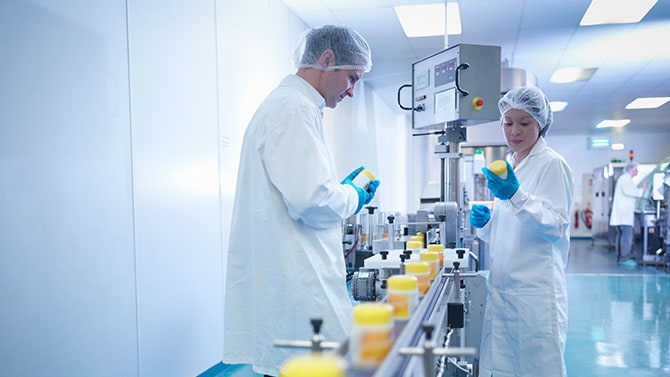
Investing in biotech: how to put a value on a promise
22/10/19
Innovative biotech companies often attract the interest of traditional Big Pharma players, but also of private equity and venture capital firms. Big Pharma is typically interested in the much-needed innovation that biotech can bring, while private equity and venture capital firms are attracted by the high potential return on investment. Irrespective of their intentions, all investors are faced with a similar uncertainty about the future prospects and valuation of biotech. PwC-expert Manoël de Goeij answers the question of how to estimate the value of biotech’s claim of being ‘promising’.
‘The intention of potential investors might be different; however, determining the value of a biotech remains a challenge for everyone’, explains De Goeij. ‘The lack of historical data and (substantial) revenues, combined with significant operational losses and uncertain future prospects, necessitates a tailor-made valuation approach, or possibly even a combination of approaches. On top of that, sellers tend to be a lot more optimistic about future earnings than potential buyers.’

Interest in biotech has increased significantly
Over the past years, interest in biotech has increased significantly. Indeed, as a result of the ‘patent cliff’ faced by Big Pharma (loss of large patents not replaced by new blockbusters), acquisitions of biotech companies are considered to be a relatively quick and efficient means to add innovative medicines to their own existing portfolios. It comes as no surprise then that companies such as GSK, BMS, Roche and Eli Lilly have invested more than a hundred billion euros in biotechs often unknown to the wider public, such as Celgene, Loxo Oncology, and Spark Therapeutics, all within the first few months of 2019. Staggering when considering that this is more than combined acquisition spend by all these companies over the previous three years.
Smaller investments but higher risk for venture capitalists
‘Private equity and venture capital have a different approach from Big Pharma’, says de Goeij. ‘Typically these players enter the biotech market with smaller investments but at an earlier stage and therefore a higher risk profile. For example, 116 million euros have been raised this year by Dutch biotech AM-Pharma from various (venture capital) investors. For all these investors, the anticipated investment horizon and expected financial returns are usually already determined upon the initial investment.’
Six valuation methods
Valuation remains tricky and subjective. In order to eliminate subjectivity and uncertainty from valuations as much as possible, PwC makes use of six different valuation methods. The Discounted Cash Flow valuation method is the one most often used, especially when biotechs have achieved certain milestones such as first clinical research and tests. ‘Under the Discounted Cash Flow approach, the value is determined from anticipated future cash flows. Given the uncertain future of biotechs, it is necessary to challenge key assumptions and perform benchmarking analysis where possible. Key value drivers to challenge would include market size, market share, sales prices, operational costs and capital expenditure. Equally important are considerations on how biotech intends to go to market – do they intend to manufacture and sell products themselves, or do they opt for a licensing agreement structure with Big Pharma?’
Double Check
Nevertheless, valuation is not an exact science, De Goeij explains. ‘For this reason, the primary valuation method is corroborated with at least another valuation approach, for instance the market or multiples approach. This method is a simplified way to determine the value of companies, which can be compared to listed companies or recent investment rounds for non-listed similar companies in the sector (to the extent available). The benefit of this method is that objective market data is used, and you are not dependent on subjective projections of management. Examples of other valuation methods would include the licensing method, the adjusted net asset value method, or a benchmark of recent financing rounds.’
To be or not to be independent
Irrespective of how the value was determined, the next step in the process is critical for biotech companies. According to De Goeij, there are broadly two scenarios: ‘The first is to be fully or partially acquired by Big Pharma. For biotechs this means giving up (part of) their independence in return for access to the pharmaceutical company’s knowledge and capabilities, which can provide a significant boost to the development of biotechs. Alternatively, option two, partnering with a venture capitalist or private equity house, means retaining independence, potentially gaining access to a prestigious advisory board, and an anticipated exit date with potentially attractive returns for investors and founders alike.’
Option two is often chosen
Option two is the most chosen option, especially in the early phases – biotechs are often founded by entrepreneurs who wish to realize their own goals and stay independent as long as possible. Selling to a Big Pharma therefore, most of the time, conflicts with this entrepreneurial mindset. That said it is also possible to follow option two first and still switch to option one later on. Such an approach could result in (much) higher profits for the founders of a biotech, but also comes with a lot more uncertainty for a longer period.’
Contact us


















